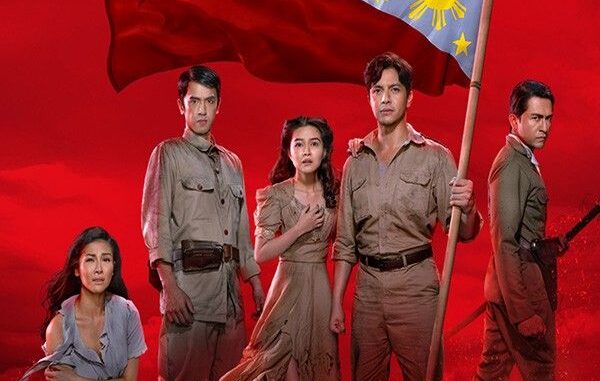
MANILA, Philippines — As the four main characters of “Pulang Araw” deal with their suppressed feelings, tonight’s episode will let viewers see the horrors brought by the bombing of Pearl Harbor in December 1941.
Almost a month since the historical show premiered on streaming platform Netflix and on free TV via GMA-7, “Pulang Araw” is moving at a faster pace as the war breaks out, affecting the lives of Filipinos, including the four central characters of the show.
Two pairs are holding back their real feelings in the name of friendship and family.
Adelina (Barbie Forteza) distances herself from her childhood friend and secret love Hiroshi (David Licauco), who was arranged to be married to her older, half-sister Teresita (Sanya Lopez).
After rebelling against her mother’s (Angelu de Leon) wishes, Teresita finds herself engaged to Hiroshi for the sake of her family. Like his younger sibling Adelina, Eduardo (Alden Richards) has to move on and forget about his long-held love for Teresita.
Adelina and Eduardo share the same mother Filipina (Rhian Ramos), while Adelina and Teresita share the same father, Julio (Epy Quizon). Thus, Teresita and Eduardo are not blood-related.
Without time to resolve their conflict that is affecting their friendship and relationships, the four main characters have to deal with an impending war that will sweep not just the Philippines but the world.
It is in this context that makes a drama resonate with audiences.
In an interview with Philstar.com after the grand press conference for the show last June, National Artist Ricky Lee shared his thoughts on how historical shows on TV are relevant and relatable to today’s audience.
Lee is a creative consultant at GMA-7, the producer of the show.
‘Personalizing history’
The master author and screenwriter said that history shapes a person’s present, in the same way that it defines a nation.
“Naniniwala ako na kung anuman ikaw ngayon, nanggaling ka sa nakalipas mo. Kung anuman ang sitwasyon natin ngayon, nag-ugat ‘yun sa pinanggalingan natin noon. So, hindi mo pwede ihiwalay,” said Lee.
He stressed that history might not be easy to digest, especially those that tackle sensitive issues and traumatic events, but it must be studied and taught to people.
The National Artist is known for penning stories with thought-provoking themes. The themes may be heavy in nature, but Lee has successfully drawn people into reading his books by writing his stories in relatable prose.
A style and manner that he believes can capture a wider audience, in the case of “Pulang Araw,” the masa and the free TV viewers.
“That’s why welcome na welcome ‘yung pagkakataon na sa halip na sobrang academic na pag-aaral ang kailangang gawin, nakaka-engkwentro ka ng kwento na nape-personalize ang history.
“So, mas madali nating nasasakyan kasi habang pinapanood mo, nae-experience mo siya, rather than pinag-aaralan mo lang. Nararanasan mo emotionally lahat ng mga dinadaanan ng mga tao personally. So, I think that’s important,” he explained.
Lee pointed out that even if “Pulang Araw” backs its story on one of the darkest times in Philippine history, the Japanese occupation during World War II, the show puts on faces behind the struggles, hardships and triumphs as opposed to academic texts and narratives.
“Even if historical siya, kwento pa rin siya ng pag-ibig, kwento pa rin siya ng pagka-kaibigan, kwento pa rin siya ng pamilya. So, relatable ‘yun sa ating lahat maskin na anong panahon, anong generation,” Lee said.
RELATED: Ricky Lee admires GMA for ‘taking risk’ in making ‘Pulang Araw’


Be the first to comment